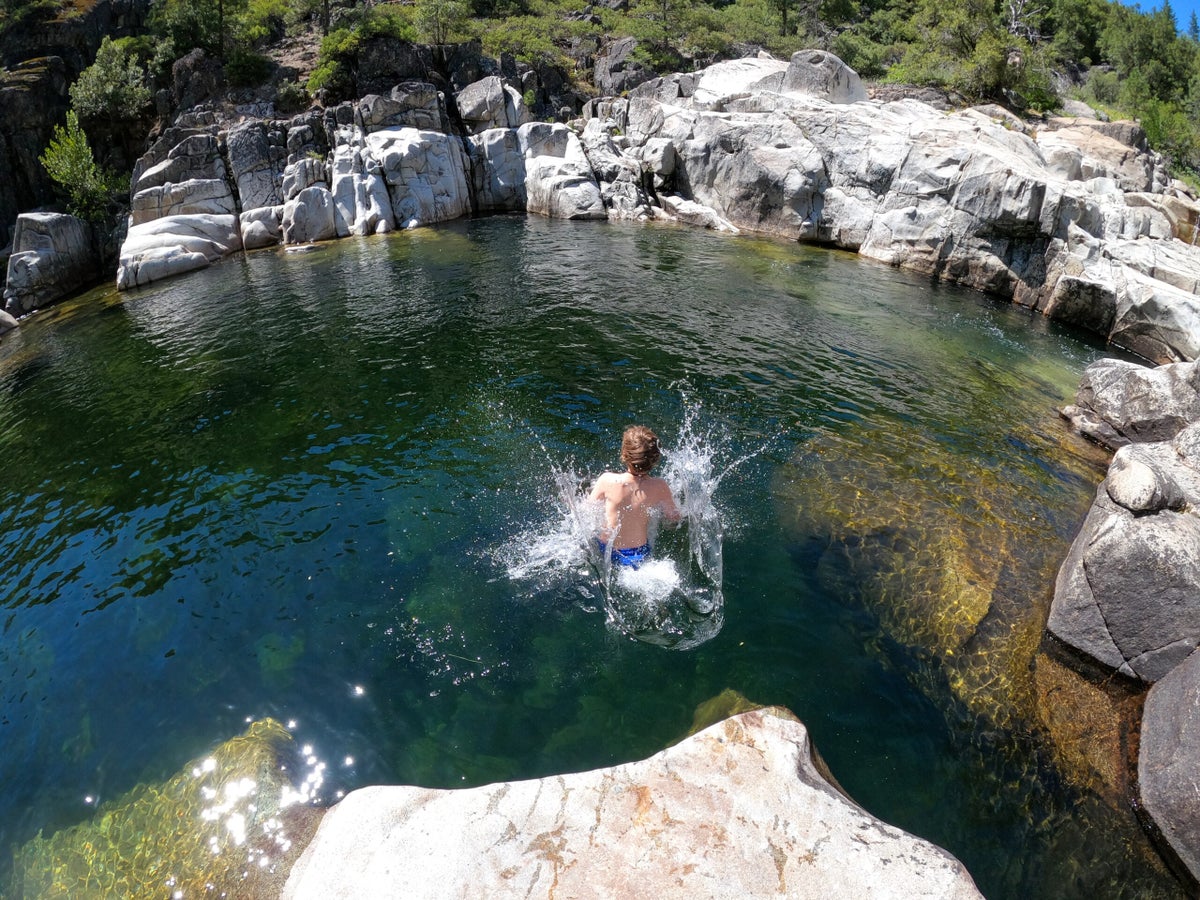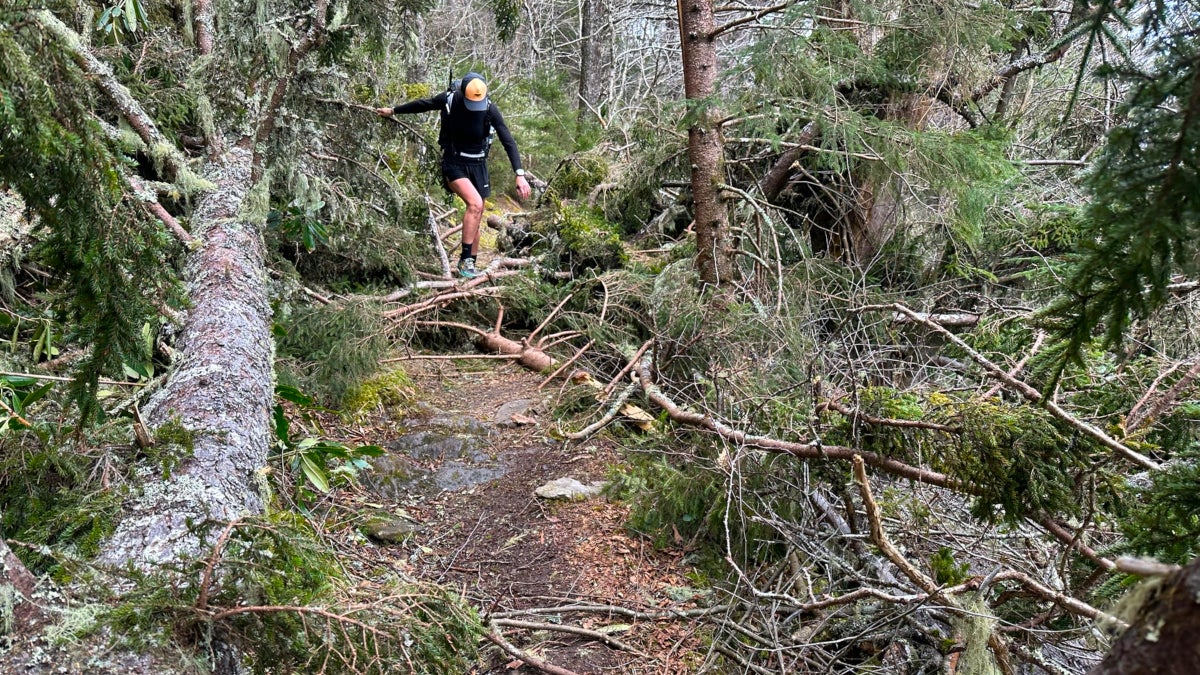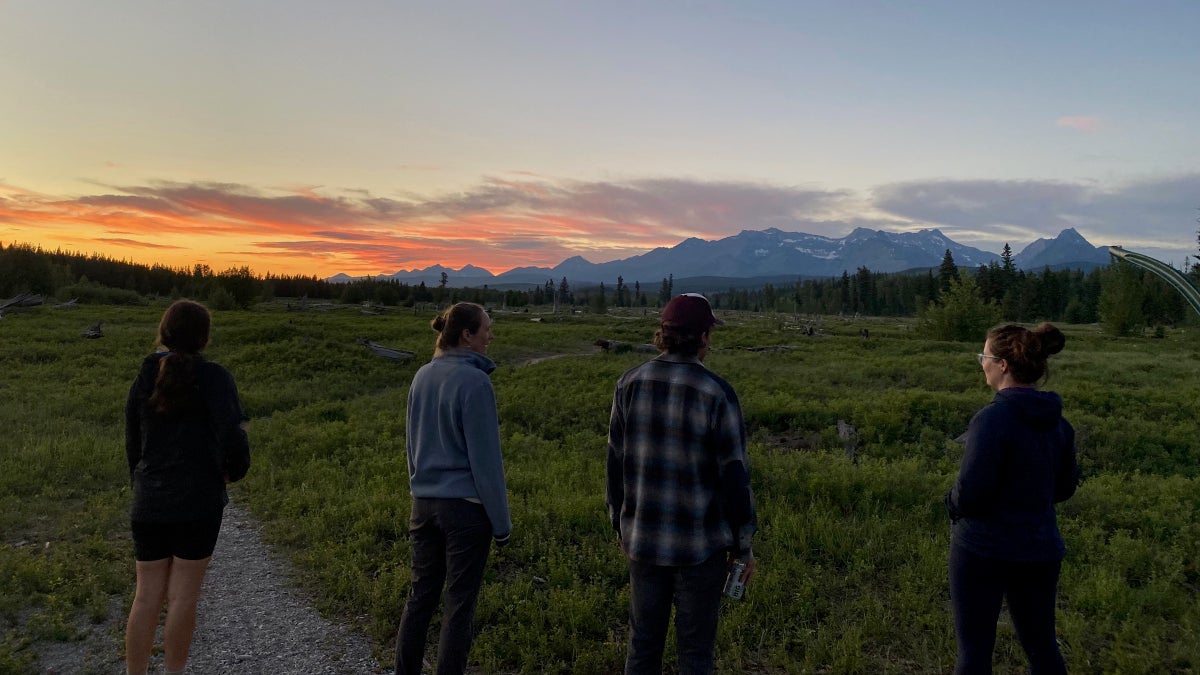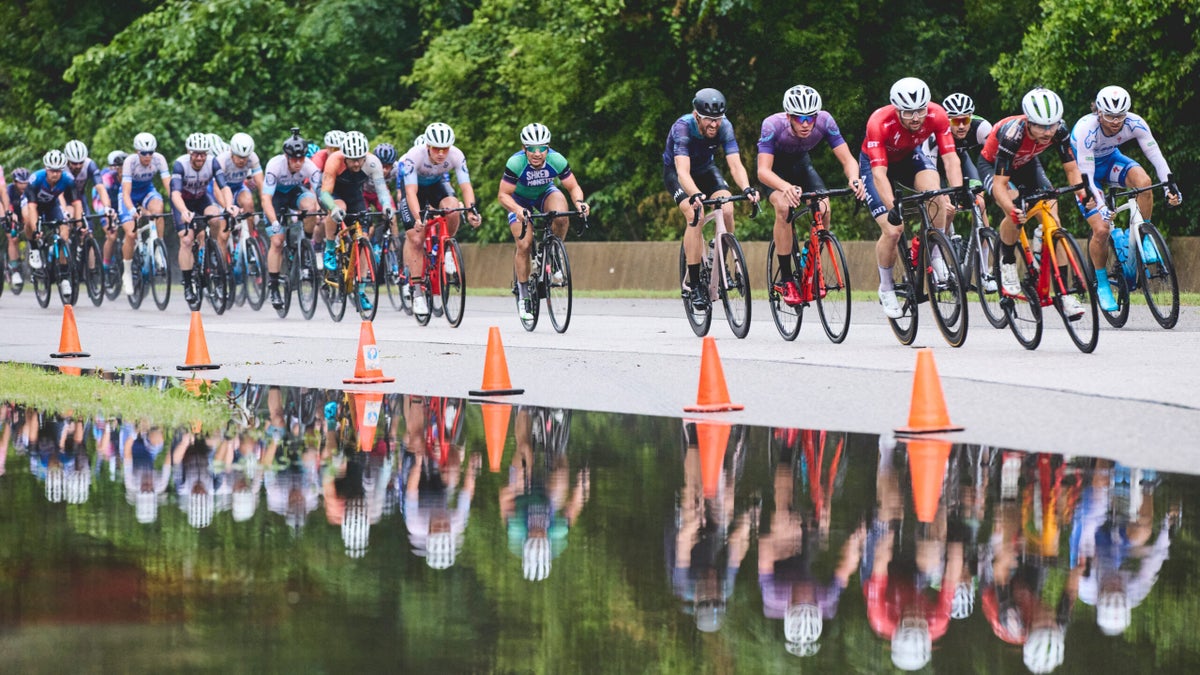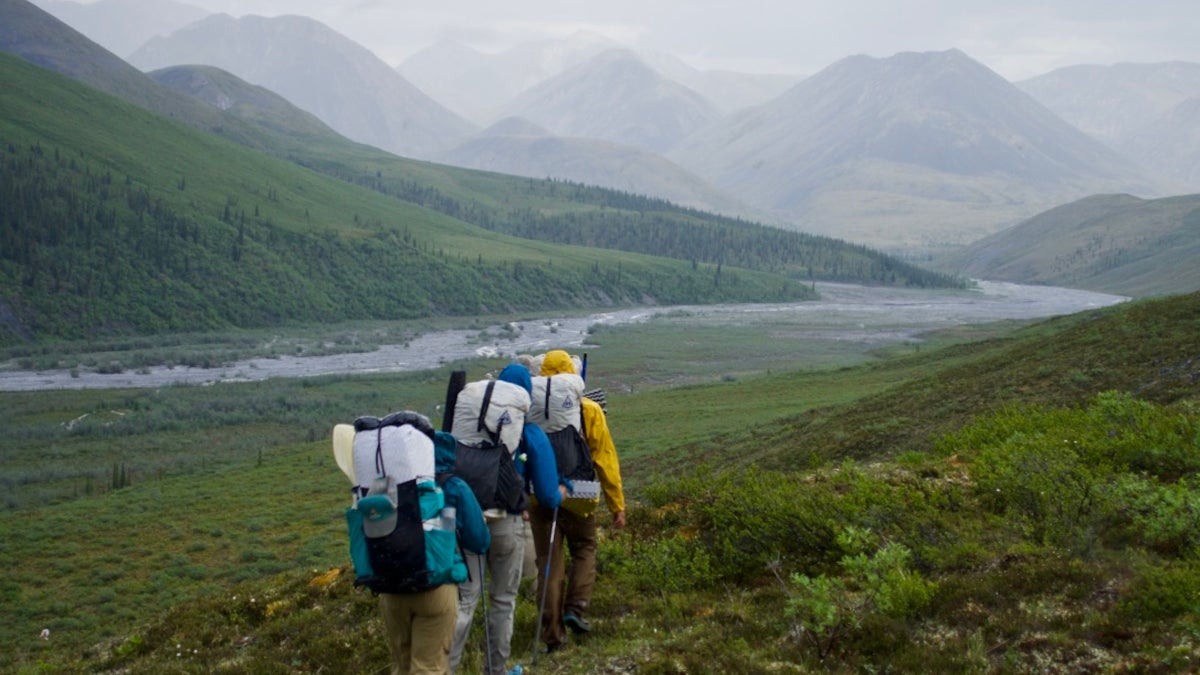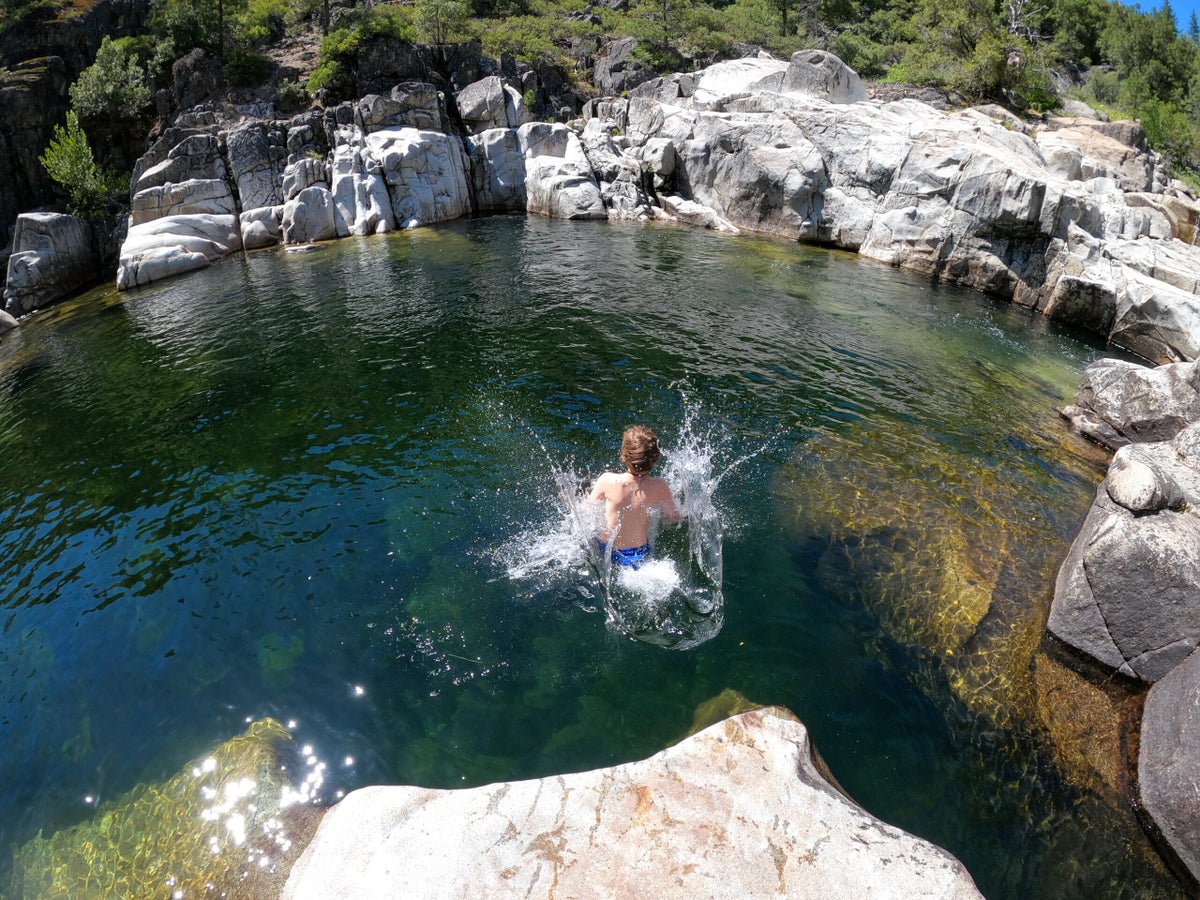
Think our national park units are only good for hiking and scenic drives? Think again. The array of protected landscapes throughout the national park system house some of the most pristine, jaw-dropping gorgeous swimming holes in our entire country. I’m talking about waterfalls with deep plunge pools and ice-cold backcountry lakes.
A note about safety: Like all of the adventures we cover at Outside, swimming in the wild comes with some inherent risks. Currents can be swift, obstacles can be hidden under the surface of the water, and there could be parasites or bacteria lurking in that gorgeous blue pool. Test the waters before you jump from any height by swimming through the landing zone first, feeling for rocks. Scout the eddies where you can safely swim to if there’s a current, and try to keep your mouth closed when plunging under water to keep any water-born creatures out. If you have an open wound, just hang out on the shore and enjoy the sun—cuts are invitation to infections.
This summer, consider packing your bathing suit on your next national park trip. Here are nine of the best swimming holes in our national park system.
1. Muir Rock, Kings Canyon National Park, California

The Park: Kings Canyon doesn’t have the recognition of other, more famous units in our park system, but it has the terrain to go toe-to-toe with any national park in the country. Think towering granite cliffs and peaks, massive old growth forests, and one of the deepest canyons in the U.S.; Kings Canyon is more than 8,000 feet deep at one point, and rock walls typically rise 4,000 feet above the valley floor inside the park.
The Swimming Hole: Muir Rock is a large, granite boulder hanging over the Kings River in the belly of the park’s canyon. It’s a long-standing tradition to jump from the rock into the deep pool of emerald green water below. It’s only a 15-foot drop, so I’d put this in the family-friendly category of leaps. The water is cold, though, and the canyon walls are steep, so show up mid-day if you want the most sun. A bit of local lore: Famed conservationist John Muir would often hang out on this rock and give speeches about the importance of the landscape to passers by enjoying the scenery.
How to Get There: Muir Rock is super easy to get to, as it sits near the parking lot at the end of Highway 180 in the heart of Kings Canyon. Simply take the short side trail from your parking space and you’ll be plunging in no time. But you should take the time to hike to Mist Falls before you go swimming. Starting from the same parking lot, hike the eight miles round trip to this tumultuous waterfall that slides over a basin of granite. Stand at the bottom and feel the mist after the water crashes into the rock at the base of the falls.
2. Bass Lake, Point Reyes National Seashore, California
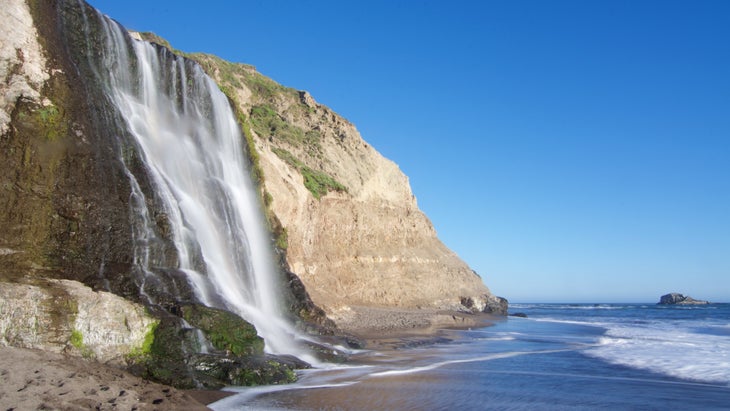
The Park: Point Reyes is best known for its beaches, as it protects 80 miles of rugged Northern California coast, where steep bluffs drop directly to the Pacific Ocean. It’s the only National Seashore on the West Coast and protects some of the most pristine coastal ecosystems in the country, from the species-rich tide pools to the cliff-top grasslands where endemic elk roam.
The Swimming Hole: While the beach is the main draw for most visitors, Point Reyes also has a trio of backcountry lakes, including the 7-acre Bass Lake, which is tucked into an evergreen forest within the seashore’s Philip Burton Wilderness. It’s a picture-perfect scene, as the bowl of water is tucked into a depression formed 10,000 years ago by a rock slide, and it has several secluded coves where you can float. Keep an eye out for a rope swing, which can sometimes be found hanging from a thick pine on the shore.
How to Get There: Part of the appeal of Bass Lake is the hike. It’s a three-mile trek on the Coast Trail from the Palomarin Trailhead, starting on the cliffs overlooking the ocean, but then moving inland through grassland and forest. Bass Lake also sits at about the halfway point along the Coast Trail to Alamere Falls, a 40-foot waterfall that drops directly over a cliff onto the beach.
3. Ely Creek Falls, Dinosaur National Monument, Colorado and Utah
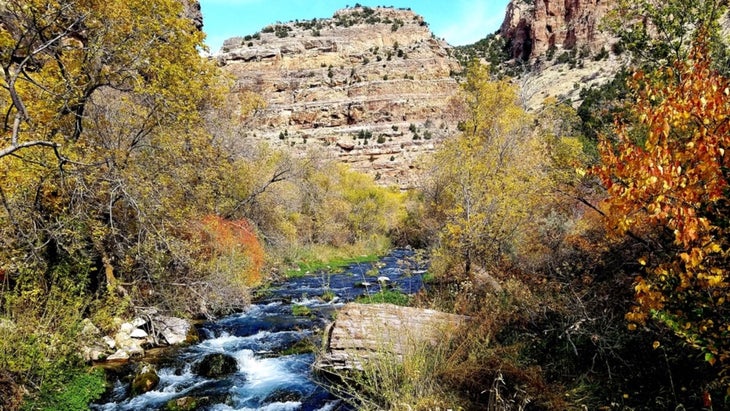
The Park: Yes, Dinosaur National Monument, which protects 200,000 acres straddling Colorado and Utah, has plenty of dinosaur fossils to check out (there are more than 1,500 bones inside the park), but it also has a surprising amount of water. The Monument encompasses several canyons, many of which have active streams, and a gorgeous slice of the Green River.
The Swimming Hole: Ely Creek Falls is a small waterfall in the Jones Hole Creek Area of the monument, where Ely Creek is funneled into a notch inside a small canyon before dropping 15 vertical feet over a sandstone cliff. It’s a pretty scene, with evergreens sprouting from the upper shelf of the falls, and an ideal place to cool off after a good hike through the desert (see below). The pool at the bottom of the falls is shallow though, so you won’t be doing the backstroke. Consider this more of a backcountry shower.
How to Get There: Hike the Jones Hole Trail as it follows the creek through a canyon for four miles on its way to join the Green River. Jones Hole Creek itself offers pristine backcountry trout fishing in crystal clear pools with a rocky bottom, known for its brown and rainbow trout (there’s a fish hatchery upstream). You’ll also have the chance to see pictographs and petroglyphs created by the Fremont people more than 1,000 years ago. Two miles into your hike, you’ll hit Ely Creek as it meets Jones Creek. Head upstream for .25 miles and you’ll hit Ely Creek Falls. You can also follow the Jones Creek Trail for the entire four miles to its junction with the Green River, where there’s a rocky beach where you can watch rafters cruise by.
4. Firehole Canyon, Yellowstone National Park, Wyoming, Montana and Idaho

The Park: Yellowstone National Park is arguably the most iconic unit in the entire park system. It was the country’s first, established by Ulysses S. Grant in 1872, and helped serve as a model for wide-scale environmental preservation across the world. Today, Yellowstone is probably best known for its thermal pools, with bizarre geysers that erupt at regular intervals and backcountry ponds that reach triple digits and present all the colors of the rainbow.
The Swimming Hole: Swimming in Yellowstone’s thermal features is illegal (and really dumb as most of them are too hot), but swimmers are welcome to jump in the Firehole River at the Firehole Canyon Swimming Area. It’s a gorgeous setting, as the river spreads out into a broad, deep pool flanked by a grassy bank and steep, granite walls. There are a handful of low-hanging boulders to jump from, too. Look downstream and you can see the river carve through a broad valley thick with a green forest. It gets crowded on warm weekends, so show up early to get a parking spot. Keep an eye on the park’s website for access. The swimming area is usually closed until mid-summer to allow the spring runoffs to pass through.
How to Get There: Firehole Canyon is easy to access. Drive the two-mile Firehole Canyon Drive off of the Grand Loop, which cruises along the Firehole River to an overlook of Firehole Falls, before hitting the parking area for Firehole Canyon.
5. Sandbeach Lake, Rocky Mountains National Park
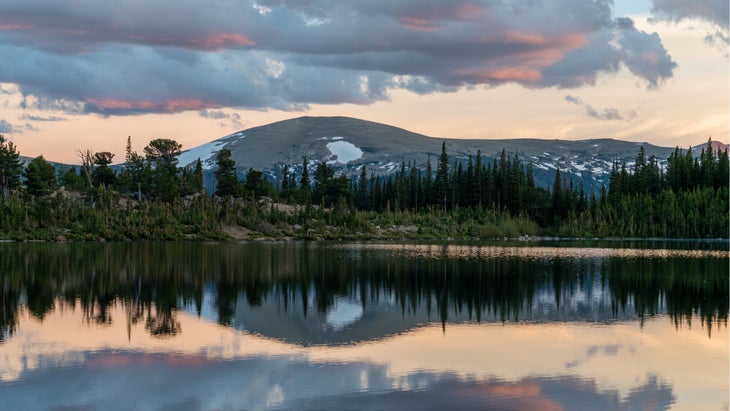
The Park: Rocky Mountain National Park is 287,000 acres of high alpine beauty, with a landscape that features more than a hundred 11,000 foot peaks, five glaciers, and a bevy of high alpine lakes. Even the scenic road through the park, Trail Ridge Road, crests at more than 12,000 feet above sea level. Swimming is not necessarily your first instinct when you’re exploring high alpine terrain, but Colorado summers can get warm. And cold plunges are good for you, right?
The Swimming Hole: Visitors are actually allowed to swim in most lakes inside the park (except Bear Lake) as it’s just not that popular of an activity because many lakes are glacier and snowmelt fed. But if you’re looking to take a dip, head to Sandbeach Lake, a 16.5-acre lake that sits at 10,320 feet that boasts a rare feature in the Rocky Mountains: a sandy beach. From the beach, you can see the 13,000-foot Mount Copeland rising from a curtain of evergreens on the other side of the lake. One thing to consider: leeches are common in Rocky Mountain National Park’s lakes. It doesn’t stop people from taking a dip, and they actually help keep the lakes clean. If you get a leech, gently pull it off your skin and place it back in the water.
How To Get There: Part of the joy of Sandbeach is its location deep in the backcountry of the park’s Wild Basin area. Beginning at the Sandbeach Lake Trailhead, hike 4.5 miles and gain 2,000 feet on the trail of the same name through a ponderosa pine and aspen forest to reach the edge of the pond. There are backcountry campsites along the trail and at the lake if you want to make an overnight out of it ($36 reservation fee).
6. Doubtful Lake, North Cascades National Park, Washington
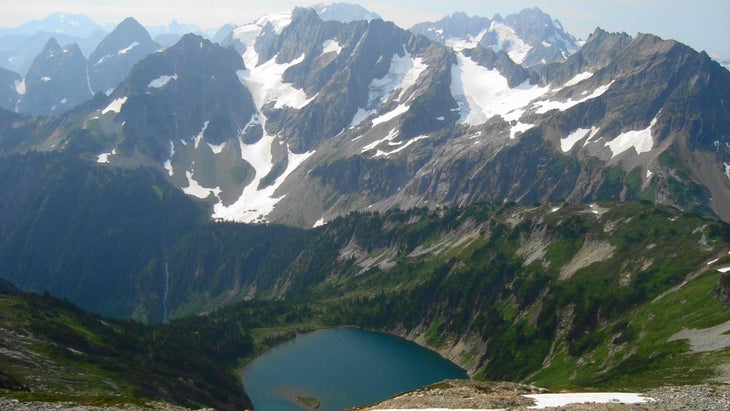
The Park: North Cascades National Park is only a few hours from Seattle, but somehow it manages to be one of the least visited national parks in the country year after year. But don’t mistake the lack of crowds for a lack of beauty; North Cascades is stunning, with more than 300 glaciers spread across the jagged peaks of Washington’s high alpine. The towering peaks and glaciers have made the park a destination for hardy mountaineers for decades. Lakes, evergreen forests, and meadows full of flowers and berries fill in the lower elevations throughout the park.
The Swimming Hole: You want a cold plunge? Take a dip in Doubtful Lake, a pristine basin that sits at the bottom of Sahale Glacier that’s constantly being fed by melting ice water. From the edge of the lake, you’ll see the granite Sahale Mountain (and its glacier) as it rises 3,000 feet from the water. Look higher up Sahale Mountain and you could spot a waterfall of melting snow. A small island can be found on the far side of the lake closest to Sahale Mountain, which seems like a natural destination for hardy swimmers. But it’s also okay to just dip a toe in the lake and enjoy the scenery.
How to Get There: Combine the Cascade Pass and Sahale Arm Trails with a short side trail to reach the lake. All in, you’re looking at a 10-mile out and back day hike. The views along the trail make every step worth the effort, even if you don’t want to take the plunge, as you’ll be treated with rotating views of some of the most impressive peaks in the Northwest, including long range shots of Mount Baker. You can also watch for adorable pikas while hiking through scree fields and blueberries in the high alpine meadows during summer.
7. Little Falls, Little River Canyon National Preserve, Alabama
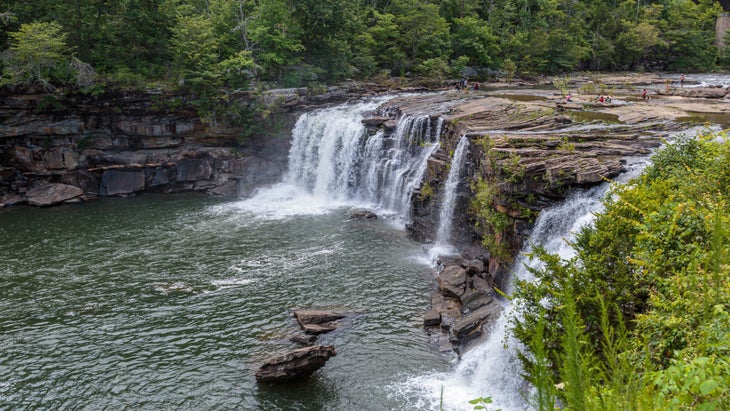
The Park: The Little River Canyon was made for swimming in the wild. The 11,000-acre preserve is home to a series of waterfalls and pools along the Little River, all of which are tucked into a deep, forested canyon through the center of Lookout Mountain, a broad plateau that occupies a corner of Alabama, Georgia, and Tennessee. There’s sandstone rock everywhere, in the form of boulders and bluffs, and there are hiking trails scattered throughout the preserve, but it’s the cold pools of water that attract most visitors, especially on hot, Southern summer afternoons.
The Swimming Hole: The 45-foot Little River Falls is the main attraction within the preserve, as the waterfall puts on quite a show as it drops over a sheer, vertical cliff into a pool below. I’ve jumped from the top of this falls before, although it is highly discouraged by the national park service for obvious reasons. Instead, take a quick trail to the bottom of the falls to swim in one of the pools downstream. Little Falls (dubbed Hippie Hole by locals) is the most popular swimming hole. Here, the river drops over a much smaller sandstone shelf, the entire length of the river. The swimming hole is at the base of the shelf, encompassed by a sandstone alcove.
How to Get There: From the Canyon Mouth Day Use Parking Area lot at Little River Falls, take the Little Falls Trail for .75 miles down into the bottom of the gorge. The trail finishes with 137 stone steps (but who’s counting) to the edge of the water.
8. Steel Creek Campground, Buffalo National River, Arkansas
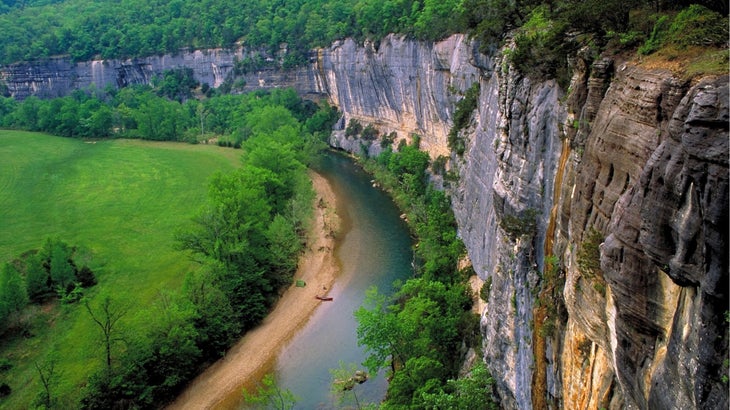
The Park: Our first National River, the Buffalo flows free for more than 130 miles through the Ozark Mountains, carving a canyon of limestone cliffs and steep, forested walls in its wake. The Buffalo is renowned for its multi-day, wilderness canoe opportunities.
The Swimming Hole: The Buffalo River offers a number of swimming opportunities during its 135-mile journey through the mountains, although as a free flowing river, the water levels are dependent on rain. The most scenic pool might be at the base of Roark Bluff, a 200-foot-tall gray, limestone cliff that rises directly from the river’s edge. If the water level is right, you can wade across the river to a gravel sandbar that forms, where you can lounge and sun yourself at the base of the cliff. If you want more time on the river, consider paddling or floating from Steel Creek to Kyle’s Landing, an eight-mile stretch that is arguably the most scenic of the whole Buffalo thanks to the prevalence of cliffs.
How to Get There: Park at the campground or the canoe launch at Steel Creek and look for paths through the woods to the Buffalo River. Head to a bend in the river where the tall, gray Roark Bluff rises from the edge of the river. If you want to spend more than one day here, Steel Creek is a 40-site campground (reserve up to six months in advance; $20 per site). The sites aren’t terribly scenic—they’re in a grassy field backing up to a hardwood forest—but you can’t beat the location.
9. Midnight Hole, Great Smoky Mountains National Park, North Carolina and Tennessee
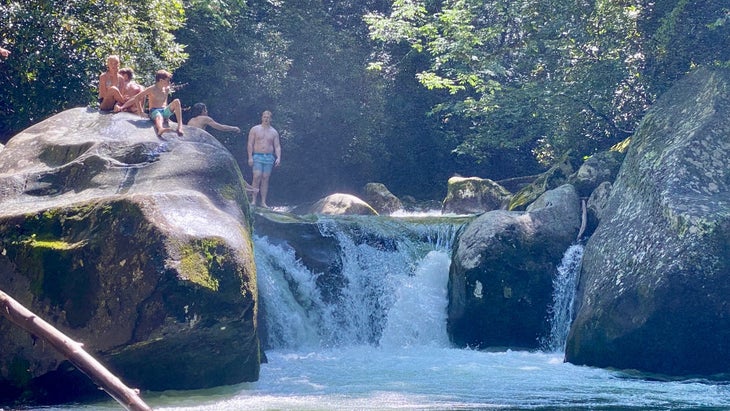
The Park: Great Smoky Mountains National Park is moist. The 500,000-acre swath of the Southern Appalachians is borderline sub-tropical in its climate, with a high annual rainfall and hundreds of miles of streams and rivers. The mountainous park is hot and humid during the summer, and it’s packed with potential swimming holes, from rope swings on the edges of lakes to deep pools at the bottom of waterfalls.
The Swimming Hole: Midnight Hole is a favorite for my family because it’s relatively easy to get to (see the hike below) and delivers an ideal balance of scenery and adventure. Here, Big Creek tumbles over a ledge in the bedrock, dropping six feet into a deep hole. Local legend has it that the hole is so deep, nobody has ever touched the bottom. That’s not for a lack of trying; the waterfall is surrounded by tall, round boulders offering a variety of launching pads for leaping. The stream is crystal clear; bring goggles and you can see fish downstream of the popular pool.
How to Get There: The waterfall is located on the northern edge of the park, on the North Carolina side of the border. From the Big Creek Trailhead, follow the Big Creek Trail along the river for three miles until you see the falls on your left. It’s an easy hike on an old road grade.
Graham Averill is Outside magazine’s national parks columnist. He loves a good swimming hole. He recently wrote a guide to visiting overcrowded and underfunded national parks this summer.
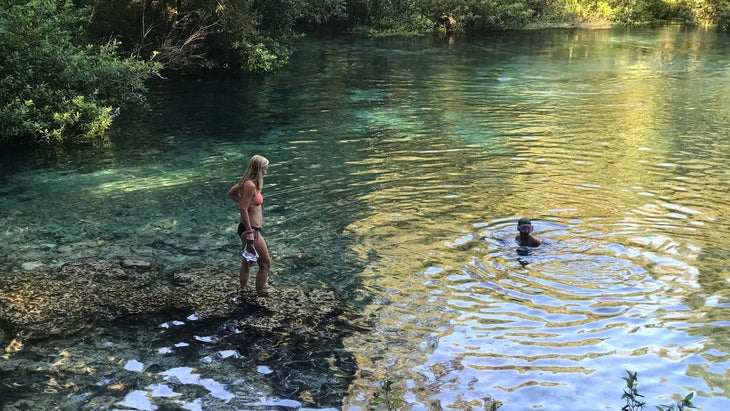
The post The 9 Best Swimming Holes in Our National Parks appeared first on Outside Online.











